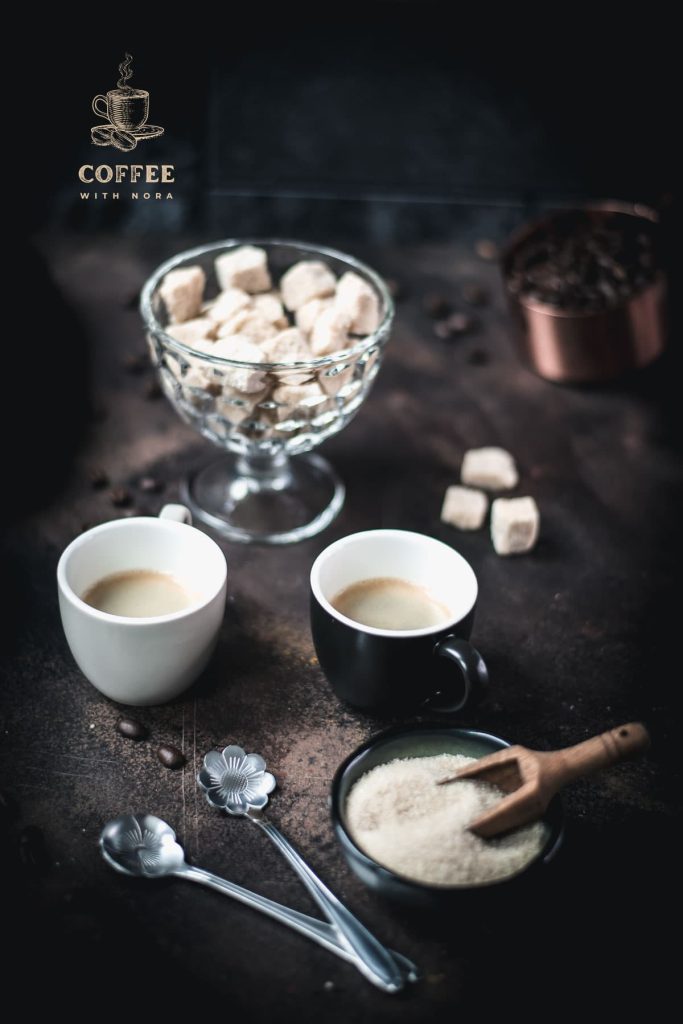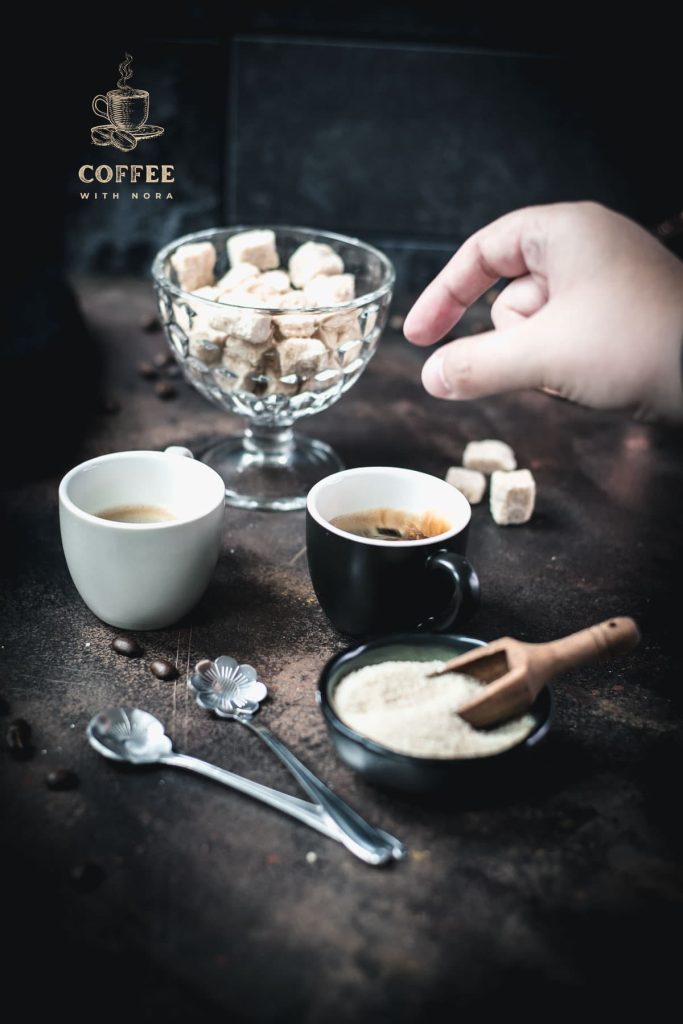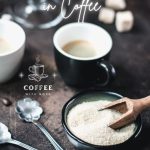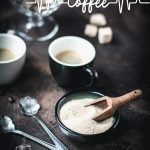Have you ever found yourself out of white sugar and in desperate need of a new way to sweeten your favorite brew? Explore one tasty option with this close look at “what is brown sugar” and “how to use brown sugar in coffee“!

Differences Between Brown and White Sugar
If you open your pantry right now you are likely to find at least one if not both of these common sweeteners. White sugar is the common white granulated or cubed sugar you will find in cafés or diners everywhere, whereas brown sugar is a must-have baking addition for cookies and more, but what makes these two sugars so different?
White sugar is made from refined sugar cane or sugar beets. In some varieties of white sugar, bone char is used during the refining process to make the sugar more white, so it is not always safe for vegans. White sugar tastes purely sweet.
Brown sugar is made with the same sweet sugary base, but unrefined or partially refined. It also has added molasses which gives it a deeper more earthy and caramel-like flavor. Brown sugar has a more sticky and dense texture than traditional table sugar due to its high molasses content. Since brown sugar is commonly unrefined, some versions of brown sugar are vegan-friendly.
The addition of molasses is what makes these two sweeteners so different. Molasses’ syrupy texture and deep, dark flavor gives brown sugar a much more complex taste. Brown sugar tastes sweet like sugar with an earthy hint of sarsaparilla flavor from the molasses.
That is what makes brown sugar a first choice for cookie recipes but this sweet flavor can be used in many other ways, including in coffee!
Types of Brown Sugar
Brown sugar comes in two main varieties; light and dark brown sugar. Both are tasty in your coffee, but they both have their own delicious flavors.
Light brown sugar is the more common variety of brown sugar. It has a mild amount of molasses so it has a lighter color and flavor. This is the first choice of bakers and a great option for adding some smooth sweet flavor to your favorite cup of coffee.
Dark brown sugar is made with the ingredients as light brown sugar, only this deeper and more robust version is made with even more molasses. This gives it a strong earthiness and darker taste.
Dark brown sugar is delicious in coffee if you love molasses, but if you are not used to the bold flavor it can be a lot. That is why most people using brown sugar for coffee choose light brown sugar for its more mild and sweet flavor.

Is Brown Sugar in Coffee Healthy?
It may be hard to believe that a sweetener may have some healthy side effects, but switching to brown sugar in your morning coffee can make a difference in your diet.
Compared to traditional white sugar, brown sugar actually retains more nutrients through its processing, creating a sweetener with plenty of nutrients. Brown sugar is loaded with calcium, iron, copper, and zinc. It also has low amounts of vitamin B6.
All of these amazing nutrients are refined out of white sugar, leaving behind empty sweetness so in general, if you want to enjoy a little sweetness with a few added nutrients, brown sugar is a great choice for coffee!
How to Use Brown Sugar in Different Coffees
The world of coffee is vast and full of options, and just about every one of them tastes great with a hint of brown sugar! From espresso to drip coffee, they can all take a dose of delicious brown sugar to highlight their outstanding flavor notes, but how much is enough?
Here is a quick cheat sheet on how much brown sugar to add to each of your favorite styles of coffee (these suggestions are based on a small-sized beverage):
- Latte – Up to 1 teaspoon.
- Espresso – Up to 1 ½ Teaspoons (per double shot). Espresso is bold and strong flavored so if you want the sweetness to come on strong you may need to add a little extra.
- Regular Brewed Coffee (Hot or Cold) – Up to 1 Teaspoon. Remember that sugar is incorporated more easily into hot coffee, so consider adding brown sugar to the coffee while it’s hot and then chilling it if iced coffee is your go-to.
- Cold Brewed Coffee – About ½ teaspoon. Cold brew coffees tend to be smoother and sweeter; therefore, they may not need as much sweetener.
This guide is just a jumping-off point. Use enough sweetener to suit your personal tastes. Always remember to sip before adding any extra brown sugar, and if you are making iced coffees, try using brown sugar syrup or adding the sweetener before the coffee cools to help it incorporate.

Frequently Asked Questions About Using Brown Sugar in Coffee
Some major coffee flavoring companies make their own liquid versions of brown sugar. These syrups are delicious and made with brown sugar and water. That means they can take the place of granulated brown sugar in virtually any coffee drink you like. However, brown sugar syrup is extra helpful in cold and iced drinks.
There are some common varieties of sugar that are brown in color and sometimes mistaken for brown sugar. However, these products are in a class of their own. Raw Demerara or Turbinado sugar are simple, more pure, unrefined forms of cane sugar, some of which do have natural molasses. Whereas, brown sugar in the modern era is produced using white sugar with the molasses added back in, giving it a more distinct molasses flavor.
Although raw sugar may be a little brown it’s not the same as commercial brown sugar. Raw sugars and other forms of brown-colored sugar can be exquisite in coffee, but they bear their own labels and in flavor, texture, and production, they are technically different.
More Recipes and Tips You Might Enjoy:
- Oat Milk Coffee
- How much Syrup to put into Coffee?
- Why does Oat Milk Separate in Coffee?
- Can you put Hot Coffee in Glass?
- Honey Lavender Oat Milk Latte
- Lavender Latte
- Iced Lavender Latte
- Iced Honey Latte
- Honey Latte
Food Safety
- Don’t leave food sitting out at room temperature for extended periods
- Never leave cooking food and beverages unattended
- Always have good ventilation when using a gas stove



